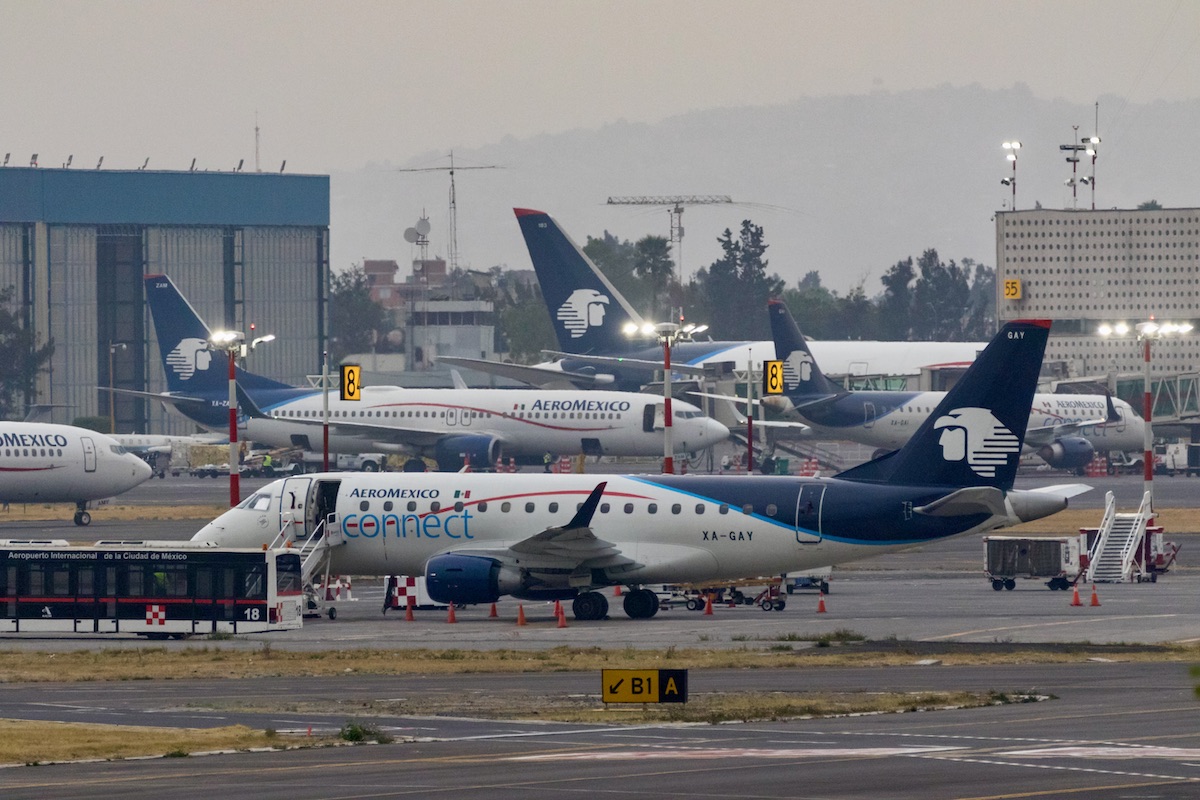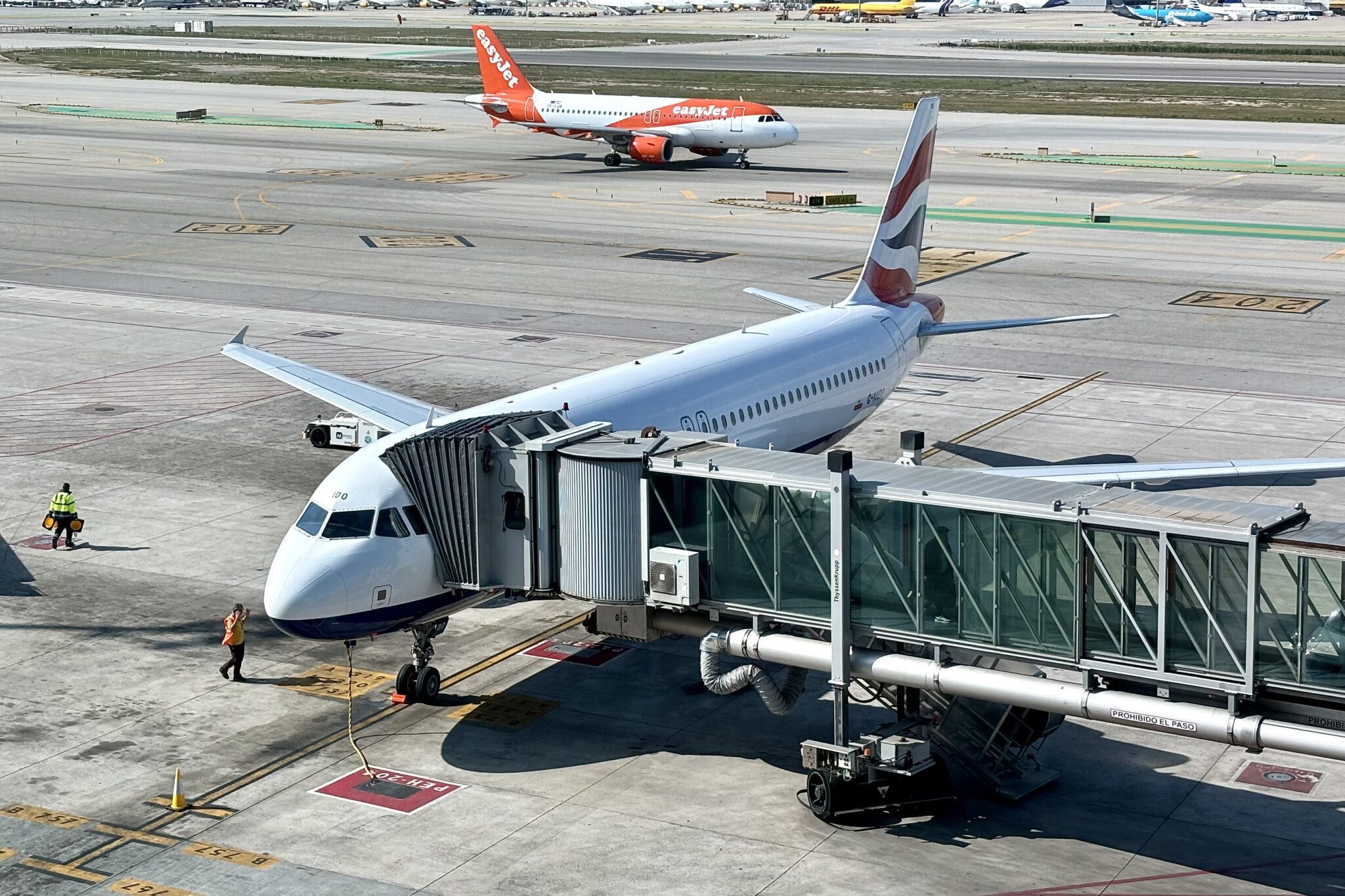It’s a tale of two outlooks in Mexico. On the one hand, the U.S. recently upgraded the country’s safety rating, which means Mexico’s airlines can resume growth to markets north of the border. On the other hand, the administration of President Andrés Manuel López Obrador is launching a government-backed airline and actively discouraging flights from Mexico’s busiest airport, Mexico City International Airport.
Aeromexico and Volaris, Mexico’s largest airlines, immediately following the Federal Aviation Administration’s upgrade of Mexico to Category 1 earlier in September said they plan to resume growth to the U.S. That growth, however, is likely to differ. Aeromexico caters to Mexico’s corporate travelers and higher earners, particularly in the Mexico City area. Its growth will likely cater to that market segment while coordinating with its U.S. joint venture partner Delta Air Lines.
“We have a very comprehensive plan to add new destinations, and also add additional frequencies to the ones we serve that today we cannot do” until Mexico is upgraded to Category 1, Aeromexico CEO Andres Conesa said in June.
Volaris, alternatively, caters to Mexico’s more budget-conscious travelers and has long touted a business plan that aims to get travelers off of long-distance buses and onto planes. For its U.S. flights, the airline serves Mexican leisure travelers and the busy visiting friends and relatives, or VFR, market between the two countries. New markets for Volaris will likely cater to those travelers, for example as TD Cowen analyst Helane Becker noted in a recent report, from its Guadalajara hub.
“The recovery of Category 1 status represents a great opportunity to encourage air dynamism,” Volaris CEO Enrique Beltranena said in a statement. The carrier, he added, would “resume its expansion plans” to the U.S., eyeing new routes and increased frequencies.
Volaris is also expected to relaunch and expand its codeshare with Frontier Airlines.
Viva Aerobus, Mexico’s third largest airline by capacity and a budget carrier akin to Volaris, is likely to resume U.S. growth as well. However, and arguably more importantly, a U.S. review of its proposed transborder joint venture with Allegiant Air can now move forward.
All of this new U.S.-Mexico growth will not start tomorrow. Becker wrote on September 15 that new routes and destinations will likely be coming online in the first quarter, owing to the lead time needed for an airline to prepare its ground operation. Additional flights on existing routes, however, could begin sooner.
The ability for Mexican airlines to add U.S. flights, which will use aircraft currently operating in the domestic market, is positive for their bottom lines, Becker added.
The FAA downgraded Mexico’s safety rating to Category 2, which bars airlines from adding new U.S. flights or participating in partnerships with American carriers, in May 2021.
A Viva Aerobus spokesperson did not respond to a request for comment on the Category 1 upgrade.
Mexico City Airport Struggles
The good Category 1 news, however, is overshadowed by the bad in Mexico City. The Lopez Obrador administration is actively pushing airlines to add more flights at his pet project, Felipe Angeles International Airport (AIFA) outside Mexico City, and cutting the number of flights allowed at Mexico City International Airport (AICM) to do so. Aircraft movements — a takeoff or landing is considered one movement — will drop to 43 per hour from 52 in January, which represents a more than 30% drop from the 61 movements an hour allowed as recently as 2022. The aim is obvious: force Mexican airlines, the only ones affected by the reduction, to move flights to AIFA.
“This decision by the [Mexican] government does not take into account the interests of consumers, nor does it respect the necessary consultative process with operators and users,” IATA Regional Vice President for the Americas Peter Cerdá said on the move. The organization “rejects and challenges” the Lopez Obrador administration’s unilateral decision and called for more investment in AICM’s aging facilities.
The Mexican government has also earned the ire of some of its largest trading partners. The U.S. Department of Transportation in July suspended its review of Allegiant Air and Viva Aerobus’ proposed joint venture in response to the Lopez Obrador administration’s mandate that all cargo airlines move flights to AIFA from AICM. That move, wrote DOT Assistant Secretary for Aviation and International Affairs Carol Petsank, was in response to what the agency viewed as violations to the U.S.-Mexico bilateral air transport agreement.
To IATA and other objectors’ credit, the Lopez Obrador administration did back down on applying the flight cuts at AICM to all airlines and instead to just Mexican ones. It also agreed to push back the implementation date by three months to January. Cargo carriers, however, still must serve AIFA.
Aeromexico is the largest airline at AICM with 58% of flights and 51% of seats in the third quarter, according to Cirium Diio schedules. Volaris is a distant second with a nearly 15% share of flights and Viva Aerobus third with a 14% share.
Simply moving flights to AIFA, which opened on the site of a former military base in 2022, is not as simple as it may appear. The new airport is far to the northeast of the center of Mexico City, and road and rail connections are lacking. Most travelers in the sprawling metropolitan area still prefer more centrally-located AICM. To date, Aeromexico, Viva Aerobus, and Volaris have all only launched a handful of flights to Mexico’s largest markets from AIFA. Several foreign airlines, including Copa and Dominican startup Arajet, also serve the new airport.
“If you have the choice of leaving from National and Dulles, it’s always going to be easier to leave from National,” said Fabricio Cojuc, a Mexico City-based adviser and former executive at Aeromar and Mexicana, using the Washington, D.C.-area airports as an example for Mexico City. “It’s kind of the same situation except our Dulles has very limited service.”
In addition, the Lopez Obrador administration is launching a new government-owned Mexicana run by the military at AIFA. That state-run airline will offer deeply discounted fares that are lower than those currently offered in the market to entice more Mexicans to fly.
The problem with a military-run Mexicana offering super cheap fares is private sector airlines simply cannot compete. Matching the new carrier’s fares could push them to losses that they then have to explain to investors. Why, then, would Viva Aerobus and Volaris want to move flights to AIFA where they will only be undercut by the government airline?
“There’s quite a bit of maneuvering, especially for Viva and Volaris, to come,” Cojuc said.
Aeromexico, Viva Aerobus, and Volaris have added some flights at AIFA. After the latest AICM flight reduction was announced, the former unveiled plans to increase flights at AIFA by 38% and added new domestic routes to Aguascalientes, Colima, Durango, and Leon-Guanajuato from October 5. Aeromexico is the largest at the new airport with 43% of all flights in the third quarter, Cirium Diio data show.
Viva Aerobus is scheduled to begin flights to the new Tulum airport, another pet project of the Lopez Obrador administration, on December 1, according to Cirium Diio.





